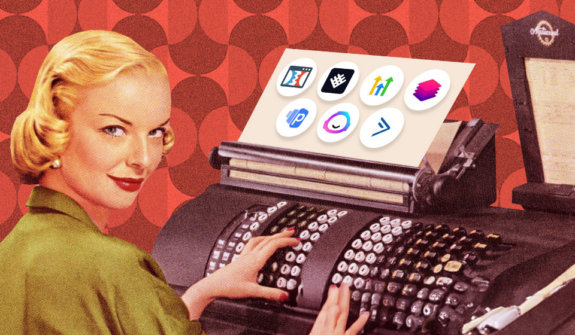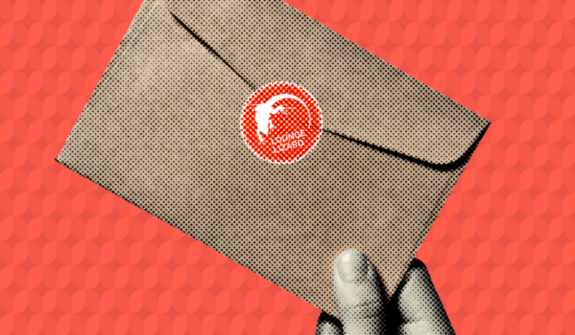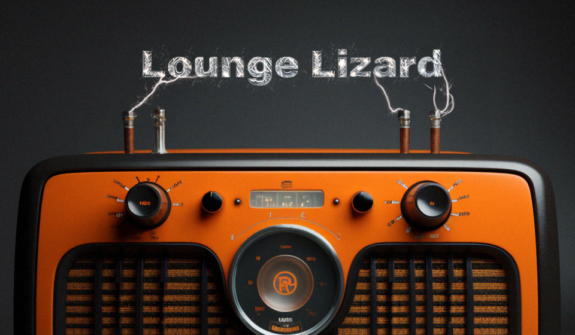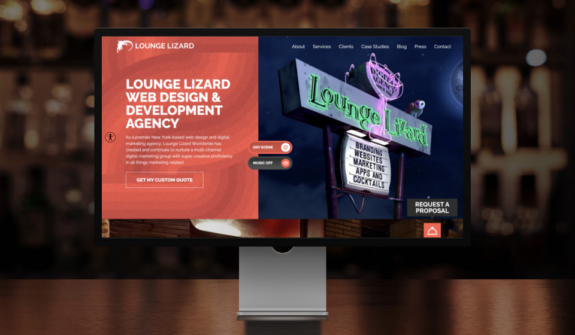How To Lower Your Ad Costs & Boost ROI

Lowering Ad Costs & Boosting ROI
In the ever-evolving landscape of digital marketing, achieving an optimal return on investment (ROI) while keeping ad costs low is the Holy Grail for advertisers. Whether you’re engaged in low-cost solo ads or managing extensive Facebook and Google Ads campaigns, mastering the art of cost efficiency can significantly impact your bottom line.
This article explores strategies and best practices to help you achieve just that.
Understanding the Basics: Ad Copy and Quality Score
Crafting compelling ad copy is the cornerstone of any successful ad campaign. Engage your audience with attention-grabbing headlines, persuasive messaging, and a clear call to action. The digital marketing realm values relevance, so tailor your ad copy to resonate with your target audience. Additionally, maintaining a high-quality score is crucial for minimizing costs. Google and Facebook Ads use Quality Score to determine the relevance of your ads to users, affecting your ad placement and cost-per-click (CPC).
Precision Targeting with Negative Keywords
To further refine your ad targeting, employ negative keywords judiciously. These are terms that, when present in a user’s search query, prevent your ad from being displayed. By excluding irrelevant searches, you enhance the quality of your ad traffic, resulting in improved conversion rates and a more efficient ad spend.
Strategically Structuring Ad Campaigns
Organize your ad campaigns, ad sets, and ad groups with a strategic mindset. This structure allows for better control over your ad spending. Allocate budget based on performance, directing more resources toward high-performing ads and audiences. Regularly assess and refine your targeting parameters to ensure you reach the right audience without unnecessary expenditure.
Leveraging Lookalike Audiences
Use the power of lookalike audiences to expand your reach effectively. Identify your most valuable customer segments and let platforms like Facebook create audiences with similar characteristics. This approach enhances the likelihood of attracting users who are genuinely interested in your offerings, thereby optimizing your ad spend.
Enhancing Ad Creatives and Placement
Invest time in creating visually appealing ad creatives that align with your brand identity. Experiment with different formats and visuals to identify what resonates best with your audience. Additionally, strategic ad placement is crucial. Analyze performance metrics to determine the most effective channels and platforms for your target audience.
Monitoring and Improving Conversion Rates
Regularly analyze conversion rates to gauge the effectiveness of your campaigns. Optimize landing pages to ensure a seamless transition from clicking on the ad to completing the desired action. A well-optimized landing page not only improves conversion rates but also positively impacts your Quality Score.
In conclusion, mastering the intricacies of digital advertising involves a multifaceted approach. By honing your ad copy, targeting parameters, and creative elements, you can minimize costs while maximizing ROI. Stay vigilant in monitoring campaign performance, adjust strategies as needed, and consistently refine your approach to achieve sustainable success in the competitive landscape of online advertising.
How To Lower Paid Ads Cost: Unlocking Cost-Efficiency in Your Campaigns
In the world of digital marketing, achieving a low-cost yet effective advertising strategy is paramount for businesses aiming to maximize their return on investment (ROI). Whether you’re venturing into the realm of low-cost solo ads or managing comprehensive Facebook Ads campaigns, understanding the best practices to minimize expenses is crucial. Let’s delve into the strategies that constitute the best way to lower paid ad costs.
Crafting Cost-Effective Ad Copy
The foundation of any successful advertising campaign lies in compelling ad copy. Create concise and persuasive messaging that resonates with your target audience without draining your budget. Emphasize the unique selling points of your product or service, ensuring that your ad is not only captivating but also relevant to the user’s search intent. Striking a balance between creativity and cost-effectiveness is key to achieving optimal results.
Optimizing for Lower Cost-Per-Click (CPC) in Facebook Ads
To achieve a lower cost per click in Facebook Ads, focus on refining your targeting parameters. Leverage the platform’s robust targeting options to narrow down your audience based on demographics, interests, and behaviors. Additionally, regularly review and update your audience segments to ensure that your ads are reaching the most receptive users. This targeted approach enhances the relevance of your ads, positively impacting your Quality Score and subsequently lowering your CPC.
Strategic Use of Negative Keywords
Employing negative keywords remains a powerful tool in your arsenal to enhance cost-efficiency. By excluding irrelevant searches and unqualified traffic, you ensure that your ads are displayed to users genuinely interested in your offerings. This strategic use of negative keywords not only improves the quality of your leads but also contributes to lowering your overall ad spend.
Ad Placement and A/B Testing
Experiment with different ad placements to identify the most cost-effective channels for your business. Platforms like Facebook and Google Ads offer various placement options, including feeds, stories, and partner networks. A/B testing different ad formats and placements allow you to discern which combinations yield the best results at the lowest cost.
Continuous Monitoring and Optimization
The digital landscape constantly changes, and what works today may need adjustment tomorrow. Regularly monitor key performance metrics, including conversion rates and average CPC. Analyze the data to identify underperforming elements and adjust your strategy accordingly. This iterative approach ensures that your campaigns stay aligned with your goals, consistently delivering value and lowering overall ad costs.
How to Make Your Cost Per Click with Google AdWords Lower
Navigating the realm of Google AdWords requires a strategic approach to ensure a lower cost per click (CPC) and optimal return on investment (ROI). Whether you’re delving into the world of low-cost solo ads or seeking ways to enhance your Google Ads performance, employing the right tactics can significantly impact your advertising costs.
Strategic Keyword Selection and Negative Keywords
Initiate your quest for a lower CPC by conducting meticulous keyword research. Identify keywords that align with your business goals and are relevant to your target audience. Utilize Google’s Keyword Planner to explore search volume and competition for selected keywords. Opt for a mix of broad match, phrase match, and exact match keywords to refine your targeting.
Equally important is the strategic use of negative keywords. These are terms for which you do not want your ads to appear. By excluding irrelevant search queries, you can enhance the precision of your ad targeting and, in turn, reduce unnecessary clicks that may not convert.
Enhance Ad Relevance with Compelling Ad Copy
Crafting compelling ad copy is essential for improving ad relevance and, consequently, your Quality Score. Write clear, concise, and enticing ad copies that align with the user’s search intent. Highlight unique selling propositions and incorporate a strong call to action to encourage clicks from users genuinely interested in your offerings.
Utilize Ad Extensions and Ad Formats
Take advantage of ad extensions to provide additional information and increase the visibility of your ads. Site links, callouts, and structured snippet extensions can enhance your ad’s appeal and relevance, potentially leading to a higher click-through rate (CTR). Experiment with various ad formats, including responsive search ads and expanded text ads, to identify what resonates best with your audience.
Regularly Monitor and Optimize Campaigns
Google AdWords offers robust analytics tools that enable you to monitor the performance of your campaigns closely. Regularly review key metrics such as click-through rate, conversion rates, and Quality Score. Identify underperforming keywords or ad copies and make data-driven adjustments to optimize your campaigns continuously.
Leverage Conversion Tracking and Adjust Bidding Strategies
Implement conversion tracking to gain insights into which keywords and ads are driving valuable actions on your website. Use this data to adjust your bidding strategies, allocating more budget to high-converting keywords and reducing bids on underperforming ones. This proactive approach ensures that your ad spend is focused on areas that contribute most to your ROI.
How to Increase ROI on Facebook Ads
In the dynamic landscape of digital marketing, unlocking the full potential of your Facebook Ads requires a strategic approach aimed at maximizing return on investment (ROI). Whether you’re delving into low-cost solo ads or exploring ways to achieve the lowest cost per click (CPC) in Facebook Ads, optimizing your strategy is crucial. Here’s a comprehensive guide on how to increase ROI on Facebook Ads while keeping costs low.
Precise Ad Targeting and Lookalike Audiences
One of the key elements in achieving a higher ROI on Facebook Ads is precise ad targeting. Leverage the platform’s extensive targeting options to reach your desired audience based on demographics, interests, and behaviors. Additionally, harness the power of lookalike audiences to expand your reach to users who share characteristics with your existing customer base. This strategic targeting ensures that your ads are shown to individuals most likely to engage with your content, thus improving conversion rates.
Optimize Ad Creative and Copy for Engagement
Craft visually appealing ad creatives that resonate with your target audience. Utilize high-quality images, compelling headlines, and concise ad copy to capture attention. A/B testing different ad variations allows you to identify the most effective elements that drive engagement. By continuously refining your ad creative based on performance metrics, you can improve click-through rates and enhance the overall effectiveness of your Facebook Ads.
Strategic Budget Allocation and Ad Scheduling
Effective budget management is pivotal in maintaining low costs on Facebook Ads. Allocate your budget strategically across ad sets and campaigns based on performance. Monitor the performance of each ad group and adjust budgets accordingly to focus resources on high-performing segments. Additionally, consider ad scheduling to display your ads during peak hours when your target audience is most active, optimizing the chances of engagement.
Embrace Conversion Tracking and Optimize Landing Pages
Implementing conversion tracking is essential to understanding the impact of your Facebook Ads on user actions. Analyze the data to identify top-performing ads and adjust your strategy accordingly. Moreover, optimize your landing pages to ensure a seamless transition for users from clicking on the ad to completing the desired action. A well-designed landing page not only improves conversion rates but also contributes to a higher ROI.
Regularly Review and Update Ad Sets
Regularly review the performance of your ad sets and update targeting parameters to align with changing trends. By staying informed about audience preferences and adjusting your strategy accordingly, you can ensure that your Facebook Ads remain relevant and effective in driving conversions.
Best Way to Improve ROI in Ads
As advertisers strive for success in the competitive landscape of digital marketing, the quest to improve return on investment (ROI) becomes a paramount objective. Whether you’re optimizing Google Ads, exploring cost-effective Facebook Ads, or venturing into low-cost solo ads, adopting a comprehensive strategy is essential for maximizing ROI. Here, we jump into the best practices that constitute the most effective way to enhance your ROI across diverse advertising platforms.
Comprehensive Keyword Strategy
Embark on your journey to improved ROI by honing in on a comprehensive keyword strategy. In Google Ads, meticulous keyword research is fundamental to ensuring that your ads are displayed to users actively searching for products or services you offer. Employ a mix of broad match, phrase match, and exact match keywords while paying attention to negative keywords to refine targeting further. This strategic approach ensures that your ads reach a highly relevant audience, increasing the likelihood of conversions.
Ad Creative Optimization
Crafting compelling ad copy and visuals is pivotal in capturing the attention of your audience. Engage users with ad creatives that resonate with their needs and aspirations. Conduct A/B testing to identify the most effective elements, such as headlines, images, and calls to action. In the realm of Facebook Ads, where visual appeal is particularly crucial, investing in eye-catching creatives can significantly impact engagement rates and, consequently, ROI.
Data-Driven Decision-Making
Embrace the power of data in shaping your advertising strategy. Regularly monitor key metrics such as conversion rates, average CPC, and Quality Score. Leverage conversion tracking tools to gain insights into user behavior and adjust your campaigns based on performance. Data-driven decision-making enables you to allocate budgets effectively, prioritize high-performing ads, and refine targeting parameters, ultimately enhancing your ROI.
Audience Segmentation and Targeting
In both Google Ads and Facebook Ads, effective audience segmentation is a cornerstone of success. Divide your target audience into segments based on demographics, interests, and behaviors. Tailor your ad copy and creatives to resonate with each segment. Utilize advanced targeting options, such as lookalike audiences, to expand your reach to users who share characteristics with your most valuable customers. By delivering personalized content, you increase the relevance of your ads and, consequently, improve conversion rates and ROI.
Continuous Optimization and Adaptation
The digital landscape is dynamic, and successful advertisers understand the importance of continuous optimization. Regularly review the performance of your ad campaigns, identifying areas for improvement. Adapt your strategies based on changing market trends, audience preferences, and platform algorithms. By staying agile and responsive, you position yourself to consistently enhance your ROI and stay ahead in the ever-evolving world of digital advertising.
In conclusion, the best way to improve ROI in ads involves a multifaceted approach encompassing keyword strategy, ad creative optimization, data-driven decision-making, audience segmentation, and continuous adaptation. By integrating these best practices into your advertising endeavors, you pave the way for sustained success, whether you’re running Google Ads, Facebook Ads, or other digital marketing campaigns. Stay informed, be proactive, and embrace the opportunities presented by the diverse tools and features available across advertising platforms. If you need more help or simply want to get an expert involved, don’t hesitate to contact Lounge Lizard for all your digital marketing needs!






